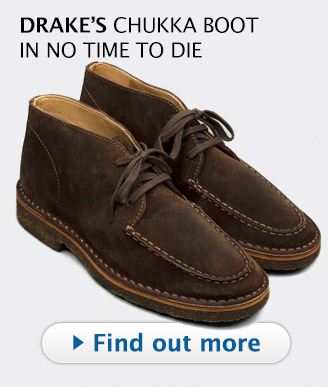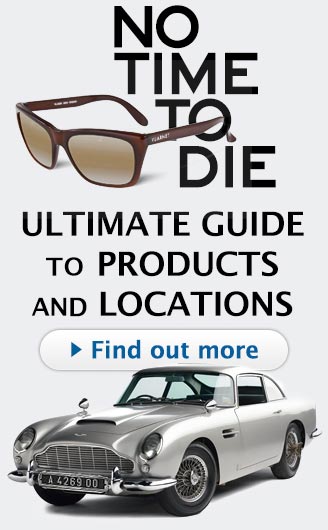Skiing - Part 2
In Part I of 'Skiing,' we focused on the importance of getting yourself into good shape, and how to put together a respectable ski outfit that would make James Bond proud. Now, it's time to hit the slopes.
Hitting the Slopes
When you finally get to the ski resort, you're going to need to hit the rental shop to sign up for your ski class. It's always best to scope out your resort before you go. Look on the website and get as much information as you can, and don't forget to look into ski classes. Find out what lessons are available, at which experience levels, when they are offered and at what times, and how to sign up. It's also a pretty good idea to call ahead before you go, even if you've already looked online, just to make sure none of the information the website has changed or become outdated. Be sure to ask how crowded the classes tend to be, and how fast they tend to fill up. Chances are you will want to get there a bit early, particularly if it's a busy season.
to sign up for your ski class. It's always best to scope out your resort before you go. Look on the website and get as much information as you can, and don't forget to look into ski classes. Find out what lessons are available, at which experience levels, when they are offered and at what times, and how to sign up. It's also a pretty good idea to call ahead before you go, even if you've already looked online, just to make sure none of the information the website has changed or become outdated. Be sure to ask how crowded the classes tend to be, and how fast they tend to fill up. Chances are you will want to get there a bit early, particularly if it's a busy season.
Renting Equipment
The one thing you need to know before showing up for your first ski lesson is that you will be expected to show up with your equipment in hand. We're talking about your skis, poles, and boots, so grab your rental equipment before you go to class.
While you may feel you are ready to make the commitment, it's still a good idea to avoid making any major purchases before you actually try skiing - at least once. You definitely want to spend a day on the slopes getting the feel of the skis, getting the feel of the boots, and understanding what you're going to want or need. This will make you help a smart purchase if and when you do eventually buy equipment.
Regarding renting your equipment, you can do one of three things:
Your first option would be to find a local rental shop close to home, and then bring your rented equipment to the ski resort. This option may present problems. If you get there and find out there's something wrong with the equipment, you can't return it until you get home. Also, you have to transport it to the ski resort. So unless you're planning on buying a ski rack for your car, this is probably not the best way to go.
The next option would be to rent the equipment at a shop close to the resort. This is a slightly better route if you're planning to use the equipment for several days. When you rent just a little away from the resort, you tend to get better prices, better service and better attention from the sales people. The shop is still relatively nearby in case you need to return there and get some adjustments. But again, the downside is that you still face the problem of traveling with the equipment, and the need to leave the resort and go all the way back to the shop if you have any issues. Once you've hit the slopes, the prospect of dragging everything back to a nearby rental shop would be enough to send you to the lodge for the remainder of the afternoon.
This brings us to your last option: renting your equipment at the slopes.
If you choose this option, you can arrive at the resort, hit the rental shop, and sign up for your class all at the same time. If there is any downside here, it's that you can count on it to be crowded in the rental shops. They will be moving a lot of people through that rental shop pretty fast, but a reputable resort staff should be able take care of your needs, and they won't send you out with the wrong equipment just to rush you through. If this is your first day on the slopes, and you're just trying to see if you like it, then this option will probably be your best. Also, if you're with a group of people, then chances are that at least a few of them will be doing the same thing, so you can follow along.
Choosing your Equipment
Once you are in the rental shop, it's time to choose the correct equipment. The first bit of gear you're going to need is a pair of ski boots. A professional skier will tell you that your boots will be your most important piece of equipment. One author illustrated this point by saying that if he were on a flight to a ski resort and had to loose either his boots or his skis, the choice would be simple - goodbye, skis!
Ski Boots
If you were purchasing a pair of boots, you would definitely want invest some time in choosing the correct pair for you; but for now, what should you look for when you're renting a pair of boots?
Many beginners renting boots for the first time will make the mistake of getting them too big. A ski boot is not a 'shoe,' and should not fit like one. When you ski, your actions are communicated from you to your skis through your boots. Your boots should feel like they've been molded to your foot and lower leg. In other words, when you try the boot on for the first time, it's going to feel really tight-but tight is good. They should not be so tight that they cut off your circulation, but they should definitely be snug. If your boots are too roomy, you will end up having less control over your skis. This forces your legs to work harder to make the skis do what you want them to do, and your feet will actually hurt more at the end of the day, both due to the extra strength needed, and because your feet have been bouncing around inside the boot. When trying on ski boots, err on the side of tight.
So, how should the boot ultimately fit? You want to make sure that the heel fits snuggly, and that your shin is pressed firmly against the front. Your toes can move a little bit, so long as they're not floating too far back, nor pressed against the front of the boot. It may surprise you to find that it takes some strength to buckle your boots, but this is correct, and it means you've chosen wisely.
One last thing to consider about boots: Once you've been out on the slopes for a while, you might feel that your feet are settling in a little bit. This may mean that you need to stop and check to see if you need to tighten the buckles a little bit. Don't wait for your boots to start to feel roomy; make sure you keep the buckles tight.
That should keep you covered as far as renting boots goes, but remember, when you feel confident enough to invest in some ski boots of your own, do this when you have enough time to spend making your purchase. There are volumes of things that you should consider when you're actually going to buy some permanent ski boots, so be ready to try on several pairs, from several different manufacturers, and for several different ability ranges. And once you have chosen your boots, you should reserve some time to have them properly adjusted. But for now, let's move on to your skis.
Skis
Compared to picking out boots, picking out skis is a relatively simple process. In the last ten years, almost all skis have become 'shaped' skis. Long, perfectly parallel skis have become the minority. When you inform the person at the rental shop that you are a beginning skier, you'll notice that he immediately offers you a pair of skis that are both short and hourglass-shaped. And the more inexperienced you are, the shorter and more 'shapely' the skis will be.
The 'side cuts,' which refers to the shape along the sides of the skis, are designed to make skiing much easier. Smaller skis also make it easier to navigate. Getting around with long skis attached to your feet will feel awkward enough when you first get on, so give yourself a break and go with the shorter skis.
Bindings
Another skiing term that you've probably heard, or will soon hear when you hit the rental shop, is 'bindings.' The binding is the part that keeps your boot strapped firmly to your ski. They are designed to keep your skis firmly attached to your boots, but to also give way and let go of the skis under a given amount of pressure, so that if you fall and find yourself rolling down the slope, the skis won't get tangled up and your legs won't get twisted. Correctly fitted bindings will let go of your skis at just the right moment.
When its time to rent your skis and boots, the folks at the rental shop will adjust the bindings for you and make sure they're just right for your boot. You don't need to know much more about the bindings, other than what they are. On the other hand, you should know how to step in and out of the bindings.
Stepping Into Your Skis
You're going to be carrying your skis right up until you're ready to either start skiing or take your class. When the time comes, you'll drop your skis to the ground, being sure the heelpiece is cocked open so that you can step into the boot. You're going to tap your boot with your ski pole to get some loose snow off the bottom of your boot. You'll know this is open when the back lever is pointing up toward the front of the boot. You want to slide the tilt part into the front of the binding, and then clamp down on the heel. When you hear that click, you know your ski is firmly in place. Then, do the same thing with your other boot. Knock the snow free, step in with the toe of your boot, and clamp down on the back.
Now, here's the way to release the bindings to take your skis off. That lever that's behind your heel that we just mentioned should be pointing upward toward the back of the ski. With your ski pole, place it down into the notch on the lever. Push down hard, and the binding should click up and release your boot. You could do the same thing with your other boot, or you could use your free boot to step down on the lever, releasing your second boot.
Ski Poles
Now, we seem to have stepped out onto the ski slope without one thing: your ski poles. Incidentally, I've heard different schools of thought regarding beginners and ski poles.
The first time I broke down and took a lesson, the rentals for the beginners were done at the same place where you signed up for your ski class. I was surprised to see that they didn't give me any poles. When I asked about this, they told me I didn't need them. The instructor said that I didn't need any poles because poles were for advanced skiers. He said that the primary use of the poles is for when skiers drop down to an angle, and the poles touching the ground will let the skiers know how much room they have between their bodies and the ground. He continued by saying that if you're a novice, the poles just get in the way and confuse the whole operation.
They gave me two short skis, and I was on my way. And sure enough, the instructor was correct. I didn't really find myself missing the poles at all. The only exception might be to help me push off when traversing flat areas. Poles will help you push off and slide a little bit. The lesson: follow the advice of your instructor, and do whatever he suggests.
If you do decide to go with a pole, the only thing you have to consider is the height. If you're not sure which height is right for you, here's a good rule of thumb: look for a pole that seems to come up just a little past your waist. Turn the pole upside down, rest it on the floor, and grip it just under the 'basket' (the little round part at the bottom of the pole). If you grip it there, and your forearm is parallel to the floor, you've got the right pole.
Now, if you're using a pole, you want to make sure you grip it correctly. Always put your hands through the straps so that when you fall you aren't walking all over the slopes trying to retrieve your ski poles.
Now, you're dressed and ready. You've got all your gear. It's finally time to go skiing.
The Importance of Taking a Ski Lesson
Let's imagine you are still on the fence as to whether or not you should take a lesson. For example, let's say you're on your first ski trip with a few friends, and they all know how to ski fairly well. You will probably have at least one friend tell you that you don't need a lesson, and that he'd be glad to show you the ropes. Before you follow him on to the ski lift, let me share a story with you:
let me share a story with you:
A few years ago I was watching a well-meaning father teaching his son how to ski. The boy was about ten years old and still very awkward on skis, as all beginners are. He had just skied down the bunny hill a few feet before he fell, and of course, like all beginners, he couldn't quite figure out how to get up. I remember the father explaining to his son the best way to stand up, and I remember that his explanation wasn't all that clear. The father basically refused to help his son get up, telling him that getting up was an essential fundamental of skiing and that he would eventually need to teach himself to stand up by himself. A few minutes went by, and the poor kid still hadn't gotten himself up. He sat there in the snow getting cold and growing more and more frustrated. I'll bet you a Hot Toddy that this was the last day this child ever tried to take on skiing.
What's the first thing you need to learn for yourself about skiing? You should learn that you love to ski, and starting out on the right foot with a qualified instructor will be your safest bet. If that father had done all he could to make the day more enjoyable, and the child had discovered that he actually enjoyed skiing, then I'll bet that child probably would have also had a much easier time standing up.
If this is your first experience on the slopes, I'm willing to bet that by the end of the day that you'll either love it or hate it. Making obvious mistakes, falling down a lot, not being able to get up, and sitting for a long time in the snow is the fastest to walk away from your first day with a bad taste. Let me make a personal plea: tell your well-meaning friends that you'll catch up in a little bit, and take a lesson!
Incidentally, most ski areas will offer packages where you can purchase your lift tickets, rentals, and ski lessons, all at once - and at a pretty good price. That might be a further incentive to actually take the lesson.
The Fundamentals Are the Key
Once you've walked away from you first lesson you should have a good grasp on the fundamentals, a new sense of confidence being on skis, and a clear idea of what you should be doing. Knowing the basics will give you a clear sense of when you're doing the right thing, and when you're doing the wrong thing and how to fix it. Keep in mind that you want to concentrate on how you feel when you're doing it right. Your instructor will look at you and tell you when you're doing something wrong, so you need to focus on how you feel when you're doing something wrong, so that you can make adjustments. When you feel you have those basics down, you're on your way to becoming a skier.
You can probably gather that once you've been handed off safely with an instructor, we've covered all we can cover in this article. Once you're on that slope with your instructor, you can officially call yourself a skier. Because as we said at the beginning, you'll learn a hundred times more with an instructor than anything I can tell you about skiing technique, but here are just a few more insights that will help you on your way.
Just Like Riding a Bike?
As I was preparing for this podcast, I realized that talking about skiing is a lot like talking about riding a bike. I realized more and more that the comparison is actually pretty close. You can probably remember the first time you tried to ride a bike. Everybody made it look really easy, and you thought you could just jump on and do it too. Then, the first time you got on the bike and started to pedal, it felt completely foreign. You had this contraption attached to your body and it just didn't feel right. You just didn't know how to communicate with your body in order to get it to communicate with the bicycle. My first experience on a pair of skis was very similar.
The first time you went forward on a bicycle seemed strange. You knew that you weren't telling the bicycle where to go; the bicycle was telling you where to go. The same thing happens with skis. The first time I put on skis and went down a small incline, I felt like the skis were going forward, and I was just going along for the ride. It was like I had slipped on a banana peel and just kept going. Your body tells you something is wrong, and you fall as quickly as you can. The parallels between riding a bike and skiing don't end there.
Just going forward on a bicycle felt like the most difficult thing you've ever tried. Then came the first time you actually tried to make turns and actually navigate the bicycle, and that became a whole new nightmare. You learned very quickly, and probably the hard way, that simply turning the handlebars left or right is not the proper way to change course. You learned quickly about balance. You figured out that you have to lean into the turns, and navigating to the left or the right had a lot more to do with leaning your body than just turning the handlebars. Suddenly you're actually turning the handlebars only slightly, but you were turning your body quite a bit. Skiing is very similar, and you're probably going to experience the same range of emotions as you learn to ski.
Initially, the skis are going to feel heavy and clumsy. But, just as you taught yourself a sort of communication system with the bicycle, you're now going to teach your body to communicate with your skis, Suddenly, you're not following where the skis are going; the skis are there to help you navigate the slope. And ultimately, the skis will simply feel like an extension of yourself - just like riding a bicycle.
In Part III, we'll get into the basics of skiing, how to navigate the slopes, and some simple rules of safety and etiquette. Now where's my Hot Toddy?
© 2010 Joseph Darlington - beingjamesbond.com
All copyrights for products, logos, images etc are held by their respective owners. Bond Lifestyle is not responsible for these articles, please take any queries up with the author.
Comments
Great and very informative article. Being an avid skiier, I've noticed one small detail that you seem to have missed in the equipment section that, I believe, is important...Ski leashes...otherwise, it indeed would be "goodbye skis", especially on a long slope.












